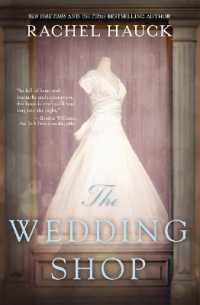Full Description
In the early fourteenth century, musicians in France and later Italy established new traditions of secular and sacred polyphony. This ars nova, or "new art," popularized by theorists such as Philippe de Vitry and Johannes de Muris was the among the first of many later movements to establish the music of the present as a clean break from the past. The rich music of this period, by composers such as Guillaume de Machaut and Francesco Landini, is not only beautiful, but also rewards deep study and analysis. Yet contradictions and gaps abound in the ars nova of the fourteenth and early fifteenth centuries-how do we read this music? how do we perform this music? what was the cultural context of these performances? These problems are well met by the ingenuity of approaches and solutions found by scholars in this volume. The twenty-seven articles brought together reflect the broad methodological and chronological range of scholarly inquiry on the ars nova.
Contents
Contents: Introduction; Part I Periodization and Boundaries: Novelty and renewal in Italy: 1300-1600, Nino Pirrotta; Ars nova and stil novo, Nino Pirrotta; Magister Egardus and other Italo-Flemish contacts, Reinhard Strohm; Problems of dating in ars nova and ars subtilior, Ursula Günther. Part II Sources: The ars nova fragments of Gent, Reinhard Strohm. Part III Music Theory: A phantom treatise of the 14th century? The ars nova, Sarah Fuller. Part IV Composers: Francesco Landini and the Florentine cultural élite, Michael P. Long; Gratiosus, Ciconia, and other musicians at Padua cathedral: some footnotes to present knowledge, Anne Hallmark; Further notes on Magister Antonius dictus Zacharias de Teramo, John Nádas; Musicology, archives, and historiography, Andrew Wathey. Part V Literary Studies: 'Un leggiadretto velo' ed altre cose petrarchesche, Pierluigi Petrobelli; Lyrics for reading and lyrics for singing in late medieval France: the development of the dance lyric from Adam de la Halle to Guillaume de Machaut, Lawrence Earp; On text forms from Ciconia to Dufay, Nino Pirrotta; Leonardo Giustinian and quattrocento polyphonic song, David Fallows. Part VI Secular Song: New glimpses of an unwritten tradition, Nino Pirrotta; Improvisation in the madrigals of the Rossi codex, Brooks Toliver; Landini's musical patrimony: a reassessment of some compositional conventions in trecento polyphony, Michael Long; Machaut's balades with 4 voices, Elizabeth Eva Leach; Playing the citation game in the late 14th-century chanson, Yolanda Plumley. Part VII Sacred Music: The sacred polyphony of the Italian trecento, Kurt von Fischer; Zacara's D'amor Languire and strategies for borrowing in the early 15th-century Italian mass, Michael Scott Cuthbert. Part VIII Motets: The emergence of ars nova, Daniel Leech-Wilkinson; Myth and mythography in the motets of Philippe de Vitry, Andrew Wathey; Imitation in the ars nova and ars subtilior, Virginia Ervin Newes; Deception, exegesis and sou








